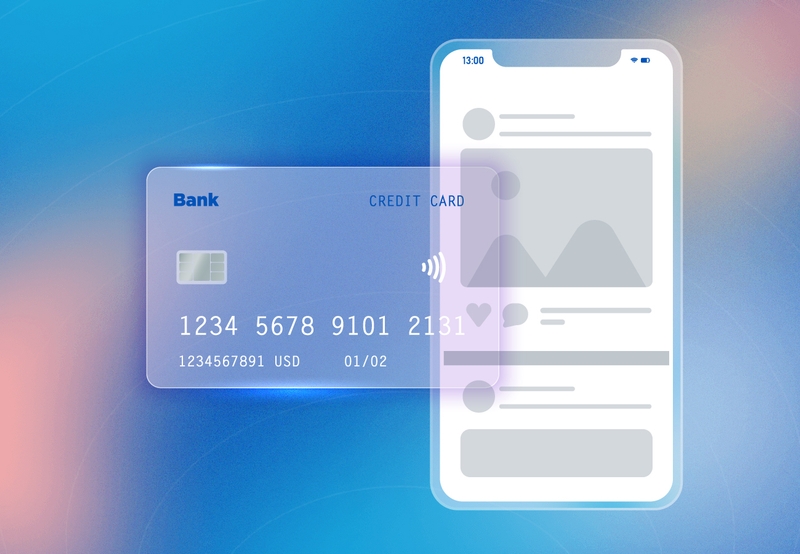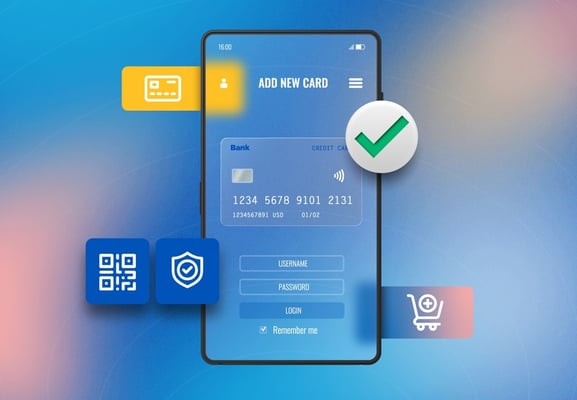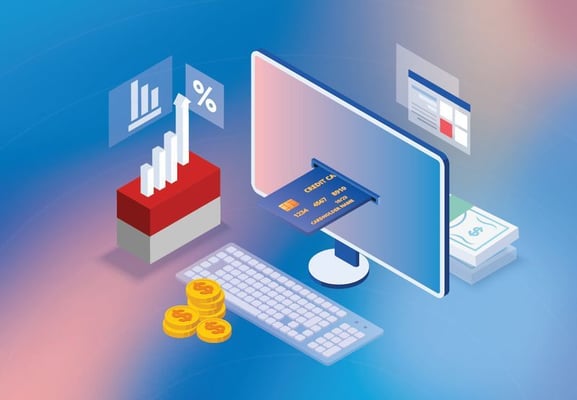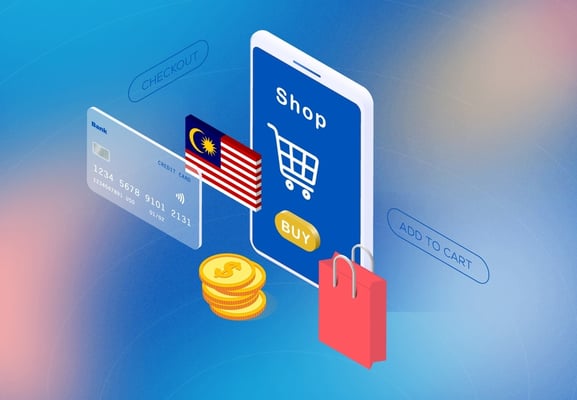The more digital businesses expand into different corners of the globe, the more hurdles they must navigate regarding local payment methods. With preferred payment options shifting between continents, countries, and even cities, and the rise of eCommerce in Asian countries, in particular, has created a huge demand for a diverse range of global alternative payment methods.
Fortunately, the right payment processing solution allows eCommerce businesses that are entering new regions to access the kind of seamless digital experience consumers increasingly demand. Take a look at prominent methods of payments in Asia, including booming economies like India and Singapore, and learn how a solution like inai can help streamline digital payment methods.
Prominent Methods of Payments in Asia
Composed of countries such as India, Singapore, and Vietnam, the continent of Asia has a population of approximately 4.68 billion people, making it the most populated region in the world. Home to nearly half of the entire population, Asia’s deep influences on the global economy are simply unrivaled. By 2024, Asia is expected to record 61.4% of the global eCommerce market and is projected to produce $1.92 trillion USD in revenue across the continent.
With such a vital role in global eCommerce growth, digital businesses must acknowledge that Asian countries will also feature an even wider variety of frequently used payment methods. Understanding the most common methods of payments in Asia will allow eCommerce business operators to better integrate their online platforms for wider customer accessibility — and increased sales. Let's take a look at some of Asia’s leading eCommerce markets and the payment solutions they prefer.
India
After China, India is the second-most populous country in Asia and currently houses roughly 1.39 billion people. By 2023, it is estimated that India will surpass China, making it the most populated country across Asia. With Asia being the largest contributor to the international eCommerce market, it would be wise to say that India is a leading factor in the continent’s eCommerce success.
In fact, data shows that while the COVID-19 pandemic stalled eCommerce growth in 2020, India’s eCommerce revenue is still expected to increase 18% from 2021 to 2025, totaling $120.1 billion USD. An increase in India’s eCommerce revenue can be attributed to a growing middle-class consumer base and changing shopping habits brought on by enhanced accessibility to global products over recent decades.
Popular Payment Methods in India
For eCommerce operators looking to expand their global reach, it’s important to understand the typical methods of payments in Asia and how they will vary between countries. Here are some of the most commonly used payment methods in India.
- UPI: Unified Payments Interface (UPI) is a payment solution that allows users to control multiple bank accounts from one application for seamless merchant payments and money transfers.
- Digital Wallets: Commonly used digital wallet solutions, such as Paytm and MobiKwik, allow users in India to add digital funds via UPI or internet banking and utilize them for any sort of consumer payment.
- BNPL: Buy Now Pay Later (BNPL) solutions such as Simpl and ZestMoney are a sort of credit payment solution that allows users in India to purchase from eCommerce merchants without the need for upfront payment.
- Local cards: RuPay is a local debit and credit card payment network in India that allows users to access ATMs and make purchases on POS devices and eCommerce websites with the use of a card.
- Global cards: Similar to RuPay, global cards or internationally accepted payment solutions such as Maestro, Visa, and Mastercard, allow users to use ATMs and make purchases not only in India but also across the globe.
Indonesia
As one of the top five most populated countries across the globe, the booming Asian country of Indonesia is home to more than 270.2 million people and is expected to see continued population growth in coming years. Though the COVID-19 pandemic significantly impacted all economies across Asia in recent years, data shows Indonesia’s economy endured an impressive rebound of 3.7% in 2021 and is projected to see further growth of upwards of 5.2% in 2022.
In the world of digital business, Indonesia held one of the highest international rates of eCommerce adoption in 2020, with upwards of 90% of internet users ages 16 to 64 years old having purchased some sort of product or service online. The gross market value (GMV) of Indonesia’s eCommerce market is expected to nearly triple from $30 billion USD to $83 billion USD between 2020 and 2025, as a steady increase in population and tech-savvy customers join Indonesia’s economy.
Popular Payment Methods in Indonesia
The explosive growth in Indonesia’s eCommerce economy is supported by a wide array of payment solutions. Take a look at some of the most popular payment solutions in Indonesia.
- Bank Transfers: Leading Indonesian banking solutions, such as Bank BRI and Bank Mandiri, allow users to make eCommerce purchases via money transfers directly from their accounts.
- Digital Wallets: Digital wallet solutions popular in Indonesia such as Dana, Shopee Pay and Ovo act as digital cash solutions that can be used for seamless in-person and online purchases.
- BNPL: Buy Now Pay Later (BNPL) solutions, including Kredivo and Atome, give Indonesian consumers the ability to make purchases via credit without the need for upfront payment.
- Global Cards: Visa and Mastercard are global leaders in credit and debit card solutions that are commonly used in Indonesia to complete eCommerce purchases, bill pay and in-person transactions.
Malaysia
In 2020, the Asian nation of Malaysia boasted a population of 32.94 million people with slow and steady growth expected for the years to come. As COVID-19-related interferences made their impacts felt across the country, Malaysia’s economy fluctuated throughout 2021; however, it is expected to rebound depending on the future status of the pandemic.
Negative COVID-19 impacts aside, Malaysia has quickly become one of the fast-growing eCommerce markets in Asia, due in part to the pandemic. With many Malaysian consumers turning to eCommerce to avoid public interaction, the country’s eCommerce market grew by 10.6% in 2021, totaling $7.1 billion USD in online revenue. Experts believe this growth to be ongoing over the coming years and reach upwards of $13.8 billion USD by 2025.
Popular Payment Methods in Malaysia
Preferred methods of eCommerce payments in Asia vary significantly depending on the locality. Here are a few popular payment methods in Malaysia that are commonly used for eCommerce shopping.
- Bank Transfers: Leading financial institutions, such as Public Bank and Maybank, offer a wide array of personal banking solutions like quick money transfers for eCommerce shopping purposes.
- Digital Wallets: Digital wallet solutions like Grab Pay, Alipay and Boost are commonly used across Malaysia to allow users to go cashless and conduct online and in-person merchant payments all from a single mobile app.
- Global Cards: International debit and credit card payment solutions such as UnionPay, Mastercard and Visa are widely accepted across Malaysia and allow consumers to conduct purchases with the simple use of a card.
Singapore
The small country of Singapore features a more modest population compared to its neighboring nations of Indonesia and Malaysia. Data shows that only 5.71 million people resided in Singapore in 2021, with minimal increases expected in the coming years. While Singapore's population isn’t expected to see any drastic increases in the near future, the same can’t be said regarding their economy.
After a strong recovery from COVID-19-related economic impacts, Singapore's government projects the country's economic growth to reach 7% in 2021, with an additional 3% to 5% expected in 2022. Regardless of the country’s size, Singapore’s booming eCommerce market is also shaping some impressive numbers, with the country projecting $7.1 billion USD in eCommerce revenue in 2022.
Popular Payment Methods in Singapore
A booming eCommerce market heavily relies on a merchant's ability to effortlessly process a variety of payment methods. Consider some of the most popular payment methods in Singapore, residents have adopted.
- Bank Transfer: Through participating financial institutions in Singapore, many consumers use PayNow to transfer funds quickly from either a bank or e-wallet for retail and eCommerce purposes.
- Digital Wallets: Digital wallet solutions popular in Singapore include Alipay, PayPal and Grabpay, which allow users to store debit or credit card details on an app for easy in-store or online purchases rather than using physical cards or cash.
- Global Cards: International credit and debit solutions such as Visa and Mastercard are common payment solutions in Singapore that offer in-person and online shopping capabilities.
Thailand
In 2019, the country of Thailand housed a population of 69.63 million people; though, not much of a population increase is expected in the coming years. With its unique geographical layout and increasing urbanization, urban and rural populations go head-to-head with 50.5% of Thailand’s population residing in urban areas and 49.3% residing in rural locations.
A variety of events, including US-China trade tensions, climate impacts on agriculture, and the COVID-19 pandemic, have slowed Thailand’s economy in recent years. Yet, as with many Asian nations, the Thai eCommerce market has continued to grow. Thailand’s eCommerce market is projected to reach $21.5 billion USD in revenue by the close of 2022. Likewise, experts suggest that the number of eCommerce market users across Thailand will soon total 43.5 million.
Popular Payment Methods in Thailand
Across Thailand, there are a variety of payment methods that can be used to conduct physical retail and eCommerce shopping. Here’s an overview some of the widely used payment options found in Thailand.
- Bank Transfers: Frequently used financial institutions, including Kasikornbank and Standard Chartered, are commonly used throughout Thailand to conduct money transfers for eCommerce payment purposes.
- Digital Wallets: Popular digital wallet solutions in Thailand including TrueMoney Wallet and Rabbit LINE Pay allows users to transfer funds to an account via a mobile application to be used for both in-person and eCommerce purchases.
- Cash & Offline Payments: The physical and online retailer Tesco Lotus allows Thailand shoppers to purchase goods and pay utility bills online but fulfill the actual payment for the items or bills offline at an in-store Tesco Lotus location using cash.
- Global Cards: Mastercard and Visa are both widely used international credit and debit card solutions that allow users to make in-person and eCommerce purchases.
Philippines
Ranking as the 13th most populous country in the world and 7th among all Asian countries, the island nation of the Philippines is home to approximately 111 million people. The Philippines currently boasts a steadily growing economy, with a gross domestic product (GDP) reaching $361.49 billion USD in 2020 and expected GDP growth of over $540 billion USD by 2026.
The eCommerce market in the Philippines has experienced gradual growth in recent years, due in part to its citizens’ internet use. Internet users in the Philippines spent 10 hours and 56 minutes per day online in 2021, the highest daily time spent using the internet in the Asia Pacific region. This has spurred an increased amount of eCommerce country-wide, as 85.7% of Filipino internet users used online shopping apps and eCommerce revenue reached $3.55 billion USD.
Popular Payment Methods in the Philippines
Common methods of eCommerce payments in Asia will vary depending on the consumers’ specific location. For eCommerce consumers located in the Philippines, here are some of the top used payment solutions to keep in mind.
- Bank Transfer: Bank of the Philippine Islands (BPI) is a widely used financial institution in the Philippines which allows users to conduct quick money transfers from their bank account for physical and eCommerce purchases.
- Digital Wallets: Digital wallet solutions typically used across the Philippines, including Pay Maya and GCash, allow users to fund an account that can then be scanned and used for eCommerce and retail purchases.
- Cash: Popular convenience store chain 7-Eleven offers e-cash services in the Philippines that allow users to make eCommerce purchases but pay for their goods via cash at an in-store location.
- Global Cards: Visa and Mastercard are both international credit and debit card solutions that are widely used throughout the Philippines to allow consumers to make retail and eCommerce purchases.
Vietnam
By 2021, the country of Vietnam reached a population of 98.48 million residents and projected steady growth over the next five years. With a low urbanization rate, many of Vietnam’s residents live in rural areas and work in agriculture. However, the labor force has shifted towards the manufacturing and services sectors in recent years, and the impacts have been reflected in the local economy.
Now striving towards a more socialist economy, Vietnam flourishes year over year, with an annual growth of more than 6% since 2016. In 2021, Vietnam’s gross domestic product (GDP) amounted to approximately $368 billion USD. Furthermore, Vietnam’s eCommerce market value is projected to reach $14.3 billion USD in 2020 with continued growth of upwards of $23.2 billion USD by 2025.
Popular Payment Methods in Vietnam
- Bank Transfers: VietinBank is a complete Vietnamese banking solution that allows users to store their funds and conduct money transfers for eCommerce purchases using card payment.
- Digital Wallets: MoMo is a widely used digital wallet solution in Vietnam that creates a method for consumers to eliminate physical cash use and conduct physical and online payments via a mobile application.
- Local Cards: Local credit and debit card solutions commonly used in Vietnam include Vietcom Bank and Standard Chartered Bank (SCB), which can be used for numerous payment purposes.
- Global Cards: International debit and credit card providers Visa and Mastercard are also commonly used across Vietnam to conduct eCommerce and in-person retail purchases.
Streamline Payments in Asia with inai
From RuPay in India to GrabPay in the Philippines — and all the methods of payments in Asia in between — it’s clear that today’s digital businesses require a flexible solution to global payment options. This is why we created inai, a single integration for global payments that allows worldwide businesses to launch, manage and scale their global payment stack.
With a variety of pricing options tailored to meet the needs of your digital business, inai makes it possible for eCommerce providers to access all payment gateways in Asia and beyond. Now, digital businesses can provide seamless eCommerce purchasing experiences, all without the hassle of time-consuming and technologically-daunting manual integrations.
If you’re a digital business expanding into new corners of the globe, book a demo today to learn how inai can streamline your methods of payments in Asia and worldwide.
.png?width=123&height=71&name=inai%20logo%20-%20dark%201(1).png)





